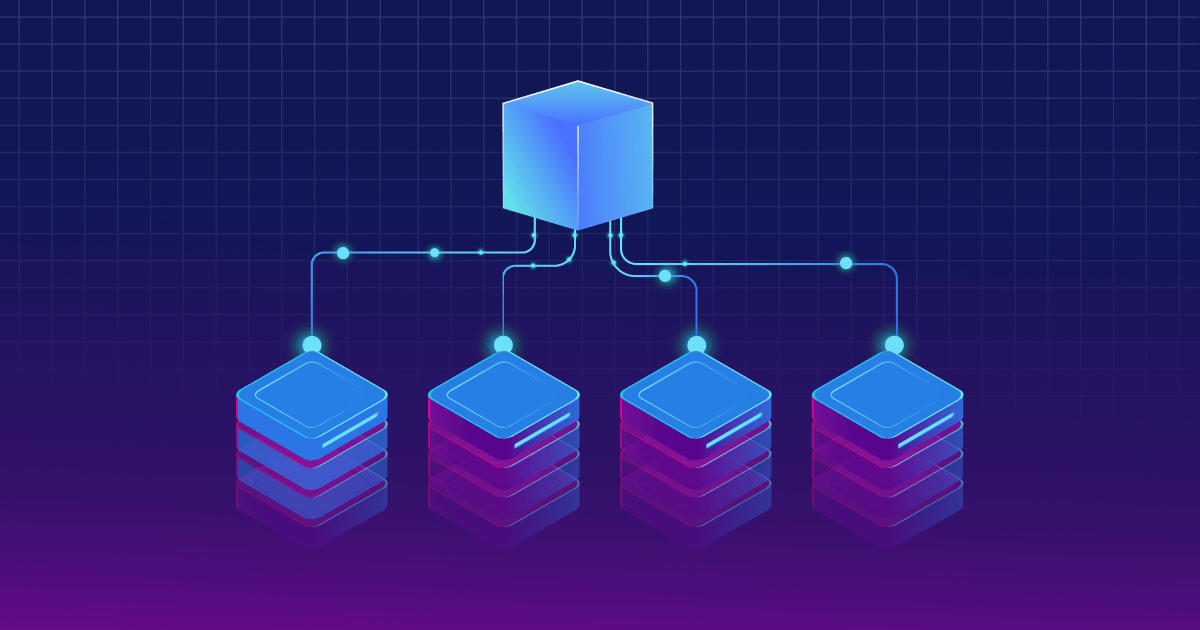
Blockchain technology has taken the world by storm in recent years. And it has become increasingly popular as a tool for storing and exchanging digital information securely and transparently. At the heart of this technology is the concept of a blockchain database. This provides a secure and decentralized platform for recording and verifying transactions. However, for many people, the workings of a blockchain database remain a mystery. In this blog, we will explore the concept of a blockchain database in detail. We will look at what it is, how it works, and its applications in various industries.
What is a Blockchain Database?
A blockchain database is a digital ledger that records transactions in a secure and transparent way. Decentralization means that many computers or nodes share the same data among themselves, making it more secure and less vulnerable to attacks. Each new transaction or entry adds on to the previous one, creating a chain of blocks that is almost impossible to tamper with. Its key features include
1. Decentralization
One key feature of a blockchain database is decentralization. This means that there is no single entity in control of the entire system. Instead, it is distributed across many computers or nodes. This makes it more resilient and less vulnerable to attacks. Decentralization also means that there is no need for a central authority to manage the system, making it more democratic and transparent.
2. Transparency
Another important feature of a blockchain database is transparency. Because there is a decentralized system, everyone on the network can see every transaction that takes place. This makes the system more transparent and trustworthy, as it’s much harder to hide or alter data. Transparency also helps prevent fraud and other malicious activities.
3. Security
Security is a key feature of a blockchain database. Encryptions obscure transactions, and multiple nodes verify them, making it almost impossible for anyone to hack or alter the data. This makes blockchain databases much more secure than traditional databases. Additionally, because of the decentralized nature of the system, there is no single point of failure, making it much harder for attackers to compromise the entire network.
4. Immutability
Lastly, immutability is another important feature of a blockchain database. Once you add a block to the chain, you can’t change or delete it. This makes it easy to track the history of any given transaction or piece of data and helps prevent fraud or other malicious activities. Immutability also makes it easy to audit the system and ensure that everything is working as it should be.
How Does a Blockchain Database Work?
1. Distributed ledger technology
A blockchain database is a type of distributed ledger technology (DLT). DLT refers to a database distributed across a network of computers or nodes. Each node has a copy of the entire database, and all nodes work together to maintain and verify the data. This makes the database highly resilient, as there is no single point of failure.
2. Consensus mechanisms
Consensus mechanisms in blockchain databases ensure that all nodes on the network agree on the state of the network. These mechanisms confirm transactions and add new blocks to the chain. They work by requiring nodes to solve complex mathematical problems before they can add a new block to the chain. This process is mining.
3. Cryptography
Cryptography is an important component of blockchain databases. It secures the data on the network and prevents unauthorized access. Every transaction on the blockchain is encrypted using advanced cryptographic algorithms. So it’s almost impossible for anyone to hack or alter the data.
4. Mining
Mining is the process of adding new blocks to the blockchain database. It involves solving complex mathematical problems that require a lot of computational power. When a miner solves a problem, they receive a small amount of cryptocurrency as a reward. This process is important because it ensures that the blockchain database is secure and that all nodes on the network agree on the state of the database.
Types of Blockchain Databases
1. Public blockchains
Public blockchains are open to anyone who wants to participate in the network. They are decentralized. Basically, this means there is no central authority controlling the network. Public blockchains are often used for cryptocurrencies and other applications that require a high degree of transparency and decentralization.
2. Private blockchains
Private blockchains are restricted to a specific group of users. They are often used by organizations that want to maintain control over their data and ensure that it is kept secure. Private blockchains are usually centralized, meaning that there is a central authority controlling the network.
3. Consortium blockchains
Consortium blockchains are a hybrid of public and private blockchains.A group of organizations own and operate them. They work together to maintain the network. Consortium blockchains offer the benefits of a public blockchain, such as transparency and decentralization, while still allowing the organizations involved to maintain control over the network.
4. Hybrid blockchains
Hybrid blockchains combine the features of public and private blockchains. They offer the benefits of both types of networks, such as transparency and security, while still allowing for control over the data. Hybrid blockchains are often used in applications that require both security and transparency, such as supply chain management and healthcare.
Applications of Blockchain Databases
1. Cryptocurrency
One of the most well-known applications of blockchain databases is in the world of cryptocurrency. Blockchain databases are used to record and verify transactions, creating a secure and transparent platform for buying and selling digital assets. Bitcoin, the first and most famous cryptocurrency, is built on a blockchain database.
2. Supply chain management
Blockchain databases are also being used in supply chain management. They can be used to track products as they move through the supply chain, providing an immutable record of each transaction. This can help reduce fraud and increase transparency in the supply chain, as well as improve efficiency and reduce costs.
3. Healthcare
Blockchain databases are being explored for use in healthcare as well. They can be used to securely store patient data and ensure that it is only accessible by authorized individuals. Blockchain databases can also be used to track the movement of pharmaceuticals and medical devices, providing a secure and transparent supply chain.
4. Voting systems
Blockchain databases can also be used in voting systems. They can be used to create a secure and transparent platform for voting, ensuring that votes are counted accurately and that the system is free from fraud. Blockchain databases can also help increase voter turnout by making it easier and more convenient to vote.
Challenges and Limitations of Blockchain Databases
1. Scalability
One major challenge faced by blockchain databases is scalability. As the number of transactions on a blockchain database grows, the system can become slow and inefficient. This is because each transaction must be verified by multiple nodes on the network, which can take time. As more and more people use blockchain databases, it will be important to find ways to scale the system without compromising security or efficiency.
2. Interoperability
Interoperability is another challenge faced by blockchain databases. Because there are many different types of blockchain databases, it can be difficult for them to communicate with each other. This can create problems when trying to transfer data between different networks. So developing standards and protocols for blockchain interoperability will be an important challenge to overcome.
3. Energy consumption
Another challenge faced by blockchain databases is energy consumption. The process of verifying transactions and adding new blocks to the chain requires a lot of computational power, which in turn requires a lot of energy. This has led to concerns about the environmental impact of blockchain technology. Finding ways to make blockchain databases more energy-efficient will be an important challenge in the coming years.
4. Regulatory frameworks
Finally, regulatory frameworks present a challenge for blockchain databases. Because blockchain technology is relatively new, there are few regulations in place to govern its use. This can create uncertainty for businesses and consumers who want to use blockchain databases. Developing clear and effective regulatory frameworks will be important for ensuring that blockchain technology is safe to use.
Conclusion
From cryptocurrency to supply chain management to healthcare to voting systems, the potential applications of blockchain databases are vast and varied. However, as with any emerging technology, there are significant challenges and limitations that we must address. The key to unlocking the full potential of blockchain databases lies in addressing these challenges head-on and finding innovative solutions to overcome them.
With ongoing research and development, as well as collaboration between stakeholders, the future looks bright for blockchain technology. And it has the potential to revolutionize the way we live, work, and interact with each other.
FAQs
1. What is a distributed ledger?
A distributed ledger is a database that spreads across multiple computers in a network. Each computer has a copy of the ledger, and changes to the ledger synchronize across the network.
2. How is data stored on a blockchain database?
Blocks contain the data on a blockchain, and these link with each together in a chain. Each block contains a set of transactions, and once a block is added to the chain, it cannot be modified.
3. What are smart contracts?
Smart contracts are self-executing contracts with the terms of the agreement between buyer and seller being directly written into lines of code. They run on blockchain technology and automatically execute when certain conditions are met.





